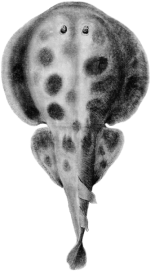
Detail from a 'Portrait of Mary Sabina' (b. 1736). Unsigned c.1744
A Visible Difference: Skin, race and identity 1720-1820
3rd July–21st December 2007
What do we see when we look at one another? What aspects of a person help us decide who they are? What assumptions do we make about identities based on colour and body image?
This exhibition that took place in 2007 was about visible differences. It explored the representations of black African children and adults living with rare skin pigmentation conditions in the 18th and early 19th centuries. It uncovered their stories, looked at how their conditions were interpreted and the ways in which they were described and displayed.
Approaches to skin and body differences in the 18th century were varied. The medical community attempted to categorise people as specimens – examples of how human beings had deviated from what was considered normal. For the public, curiosity about body difference became a form of entertaining spectacle. People went to fairs and shows to view giants, dwarves, fat people, spotted children and black albinos, all of whom were considered wonders of nature.
How much of this has changed? Are we as curious about visible differences now as people were then? What is it like to live with similar conditions today? Through the stories presented here we can begin to explore these challenging concepts, and to make connections with our own experiences of living with a visible difference
These paintings illustrate the popular fascination with unusual bodies. During the Enlightenment period when new theories about the nature of human races emerged, these skin conditions challenged established definitions and conventions. As social outcasts and medical phenomena, black people with spotted, patched or white bodies became a sought after commodity
The exhibition is part of a wider project which uses the stories of Mary, George and other figures such as the ‘Spotted Indian’ John Bobey and the ‘White Negro’ Mrs Newsham to explore issues of identity, self-image and cultural distinctiveness in modern society.
By showing us how society has responded to people with skin pigmentation conditions in the past, this exhibition encourages us to examine our own attitudes and behaviour today.
A Visible Difference: skin, race & identity 1720-1820’ has been supported by grants from the Heritage Lottery Fund and the John Lyons Charity.
On display in the exhibition were two rare paintings of black African slave children. The little-known portraits depict Mary Sabina, who was born in South America in 1736, and George Alexander Gratton, who was born in St Vincent in 1808. Both children had piebaldism - a rare genetic skin pigmentation condition causing extreme white patches on the skin.
George and Mary were among many black African men, women and children with similar conditions who were exhibited at public fairs and in private "curiosity collections" as freaks of nature. Their images are recorded in the museum and library collections and these paintings, prints and drawings illustrate the popular fascination at that time with unusual bodies. Such images challenge the viewer to consider their own curiosity about visible differences
Exhibiting Difference supported learning inside and outside of the classroom through the creative response project with London secondary schools, the offer of facilitated visits to the project exhibition and museums permanent galleries with museum experts, the creation of a printed pack of learning resources to prepare for and follow up a visit to the museum, the production of downloadable resources for students and teachers to use in the classroom and the creation of a set of materials to guide students through the exhibition and museum on a teacher-led visit.
Creative partnership with schools
Over 200 secondary school students aged between 11 and 15 years have created this amazing display. Working with four professional artists, the students responded to the visual images from the exhibition ‘A Visible Difference: skin, race and identity 1720-1820.
Students were encouraged to think about the people with skin pigmentation conditions shown in the exhibition, in particular the children George Alexander Gratton and Mary Sabina. The young people were asked to consider their own attitudes and behaviour towards people with a visible difference. They also discussed identity, self image, and the need to respect difference and combat prejudice and discrimination.
Commemorating and celebrating the creative partnerships
The Hunterian Museum produced a booklet in collaboration with the creative partners to commemorate and celebrate the work of the students, teachers and artists involved in this project.


